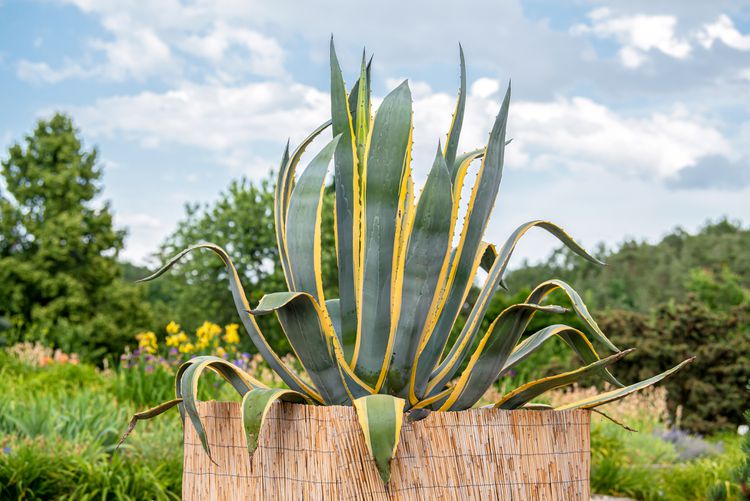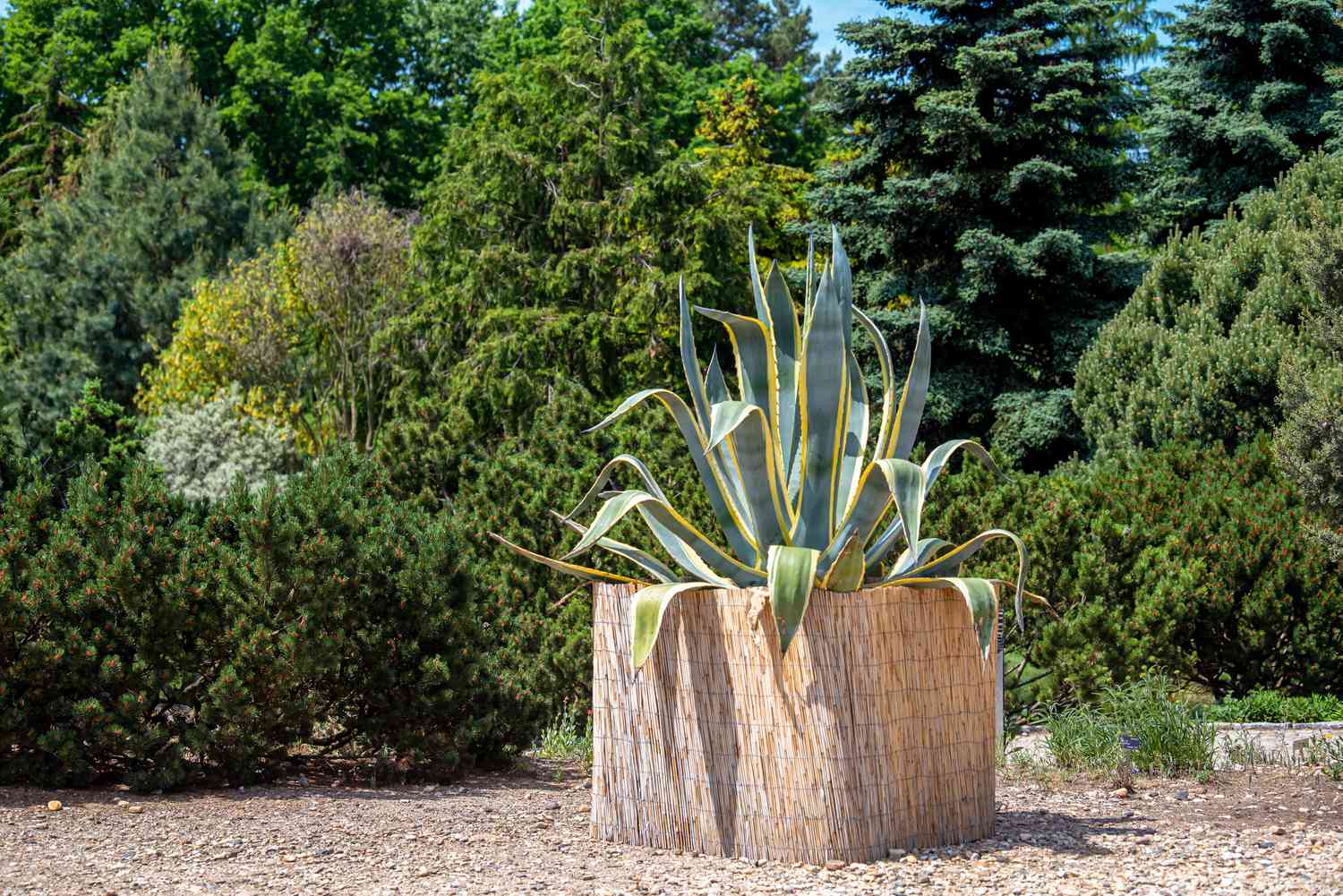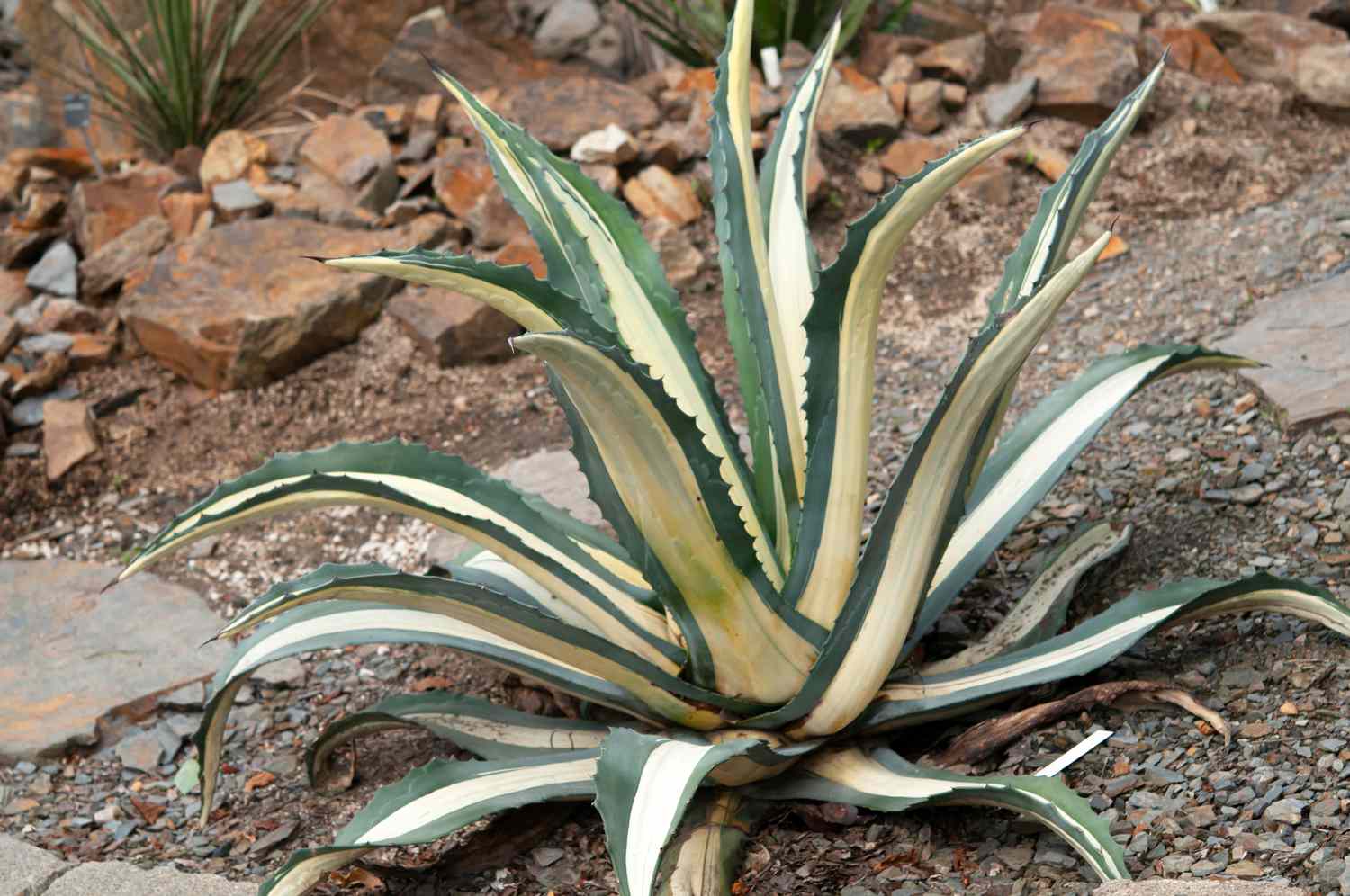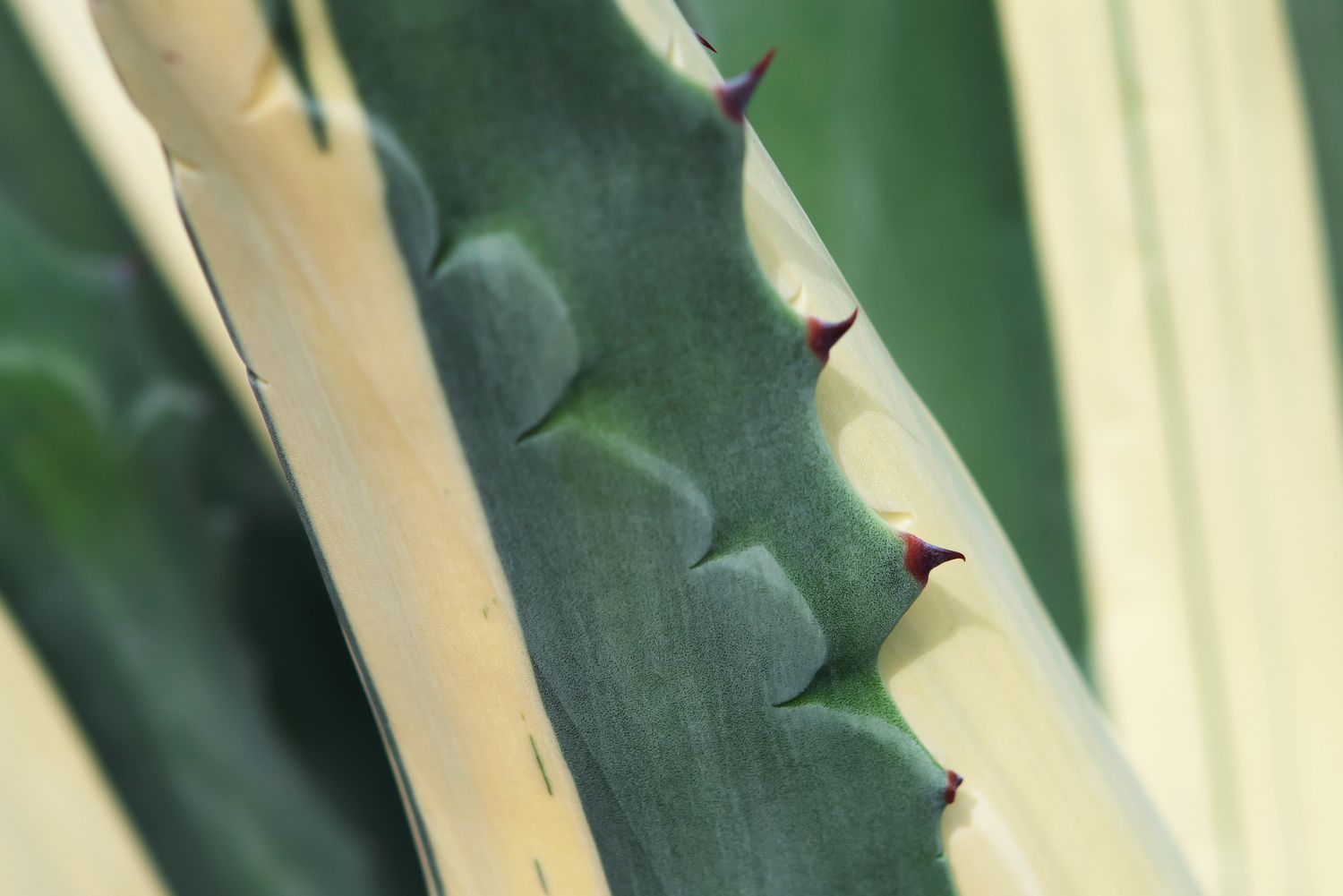Contents
- Light
- Soil
- Water
- Climate and Moisture Levels
- Fertilizer
- Varieties of Agave Plants
- Cultivating Century Plants
- Growing Century Plants from Seeds: A Step-by-Step Guide
- Transplanting and Replanting Century Plants
- Overwintering
- Tips for Encouraging Century Plants to Flower
- Frequent Issues Encountered with Century Plants
- Drooping or faded foliage
- A plant that is either weak or emits an unpleasant odor.

The century plant is an impressive agave species that stands out with its remarkable size and beauty. It can reach dimensions of up to ten feet in width and six feet in height, featuring thick, arching leaves that come in shades of grey-green or with variegated patterns. To defend itself, the leaves are adorned with sharp spines, deterring curious pets and humans. Additionally, the plant’s sap is regarded as mildly toxic.
Commonly referred to as the American aloe, the name is somewhat misleading. Previously, it was thought that this plant required a century to flower, but it has since been discovered that it actually blooms after two to three decades of energy accumulation, producing a single stalk adorned with a cluster of small yellow flowers. As a monocarpic species, this floral display marks the plant’s last performance before it perishes.



Light
Similar to other species of agave, century plants thrive in full sunlight, so it’s important to place them in an area that gets a minimum of six to eight hours of sunlight daily. Nevertheless, they can also be cultivated in partial shade if your location does not provide full sun conditions.
Soil
These plants thrive in dry, sandy soil conditions. While they can endure various soil types, including clay, it is essential that the soil drains well. Century plants are susceptible to root rot if they are planted in excessively wet soil.
Water
The thick, elongated leaves of the agave are adapted to retain moisture during dry spells, so it’s best to avoid overwatering them. Nonetheless, these plants benefit from consistent watering during the growing seasons of spring and summer. Water them thoroughly, but ensure the soil dries out completely before the next watering, which could range from once a week to once a month, depending on the climate.
Climate and Moisture Levels
The century plant originates from Mexico and Texas, which reveals its preferred climate of warm temperatures and low humidity. It thrives best under these conditions. It is important to remember that this plant can withstand temperatures down to approximately 20 degrees Fahrenheit, but it is susceptible to frost damage.
Fertilizer
Generally, there is no need to apply fertilizer to a century plant, as they thrive in sandy soil that lacks nutrients. Similar to other agave varieties, these plants complete their life cycle after flowering, so using fertilizer to hasten this process will only reduce their lifespan.
Varieties of Agave Plants
- ‘Marginata’: Often referred to as a variegated century plant, this type features cream to yellow edges on its leaves, adding a striking visual appeal.
- ‘Mediopicta alba’ is a somewhat smaller cultivar that showcases gray-green leaf edges adorned with a solitary central creamy-white stripe. This variety generally reaches a height of three to four feet and can spread between four to six feet.
- ‘Mediopicta aurea’ is a cultivar of Agave americana that, like other mediopicta varieties, reaches a more compact size, growing to about six feet in height and width. Its leaves are variegated, showcasing a vibrant yellow central stripe. This variety is often regarded as more tolerant of light shade compared to other agave types.
Cultivating Century Plants
Similar to other species of agave, century plants are primarily propagated through offsets, commonly referred to as pups. These are essentially clones of the original plant that can be easily detached and planted on their own. Generally, minimal tools are required, as you can often remove the pups by hand. However, having a small trowel on hand can be beneficial, and wearing gloves will help safeguard your hands from the parent plant’s spines. Ensure you have a container or a garden area prepared with soil that drains well. After that, you can proceed with the propagation process by following these steps:
- Once you have safeguarded your hands and arms, find a pup at the bottom of the main plant. Occasionally, you may find several pups growing in close proximity. Utilize a trowel to carefully loosen and separate the pups.
- Hold the pup by its base and gently twist it to detach it from the parent plant and the surrounding soil. If needed, employ a trowel to help separate the plant from the soil and the roots that are still connected to the parent. Ensure that a section of the stem that links the pup to the parent plant remains intact, along with the pup’s root system. Starting with a bare base on the pup can make it difficult for root development to occur.
- You can plant pups either directly into the soil or in a pot. In either case, it’s important to use soil that drains well.
Growing Century Plants from Seeds: A Step-by-Step Guide
Cultivating a century plant from seed is relatively rare, as this plant blooms only a single time after many years of development. A more typical method of propagation involves using the offshoots that the plant frequently generates during its lifespan.
Transplanting and Replanting Century Plants
Century plants can be cultivated in containers; however, it’s important to remember that they can grow to be quite large. Many gardeners opt to keep them in pots until the plant’s size, along with its sharp leaves, makes it more feasible to transfer it to a permanent spot in the soil.
When opting to grow Agave americana in a pot, select a spacious container and ensure the soil provides outstanding drainage. A well-balanced mix of compost, potting soil, and either gravel or sand works well. Alternatively, you can utilize a commercially available succulent potting soil mix.
Luckily, century plants grow at a slow pace, which means you probably won’t need to repot them more than once every couple of years. When it’s time to repot, make sure to wear protective clothing, such as gloves, a long-sleeved shirt, and long pants, to shield your skin from their sharp spines. Use a new potting mix and select a larger pot to accommodate the ongoing growth of your century plant.
Overwintering
The century plant is sensitive to frost, requiring indoor shelter to endure winter conditions beyond its preferred growing areas. In regions with cold yet relatively dry winters, you can help a mature agave survive by offering some protection from harsh weather. Position it in a well-draining spot that is shielded from northern winds. Alternatively, placing the plant near a large rock can help, as the rock will emit heat after sunset. If nighttime temperatures drop to the plant’s lower tolerance, draping it with a cotton sheet can provide extra protection.
Tips for Encouraging Century Plants to Flower
The most difficult aspect of encouraging a century plant to flower is the lengthy wait involved. Typically, it can take anywhere from 20 to 30 years for the plant to produce a single, tall stalk adorned with flowers, which can exceed 20 feet in height. While some fertilized or fast-growing specimens may flower in as few as ten years, such occurrences are rare. Once the plant blooms, it only does so a single time in its lifetime, after which it will perish.
Once the century plant flowers, its leaves will wither, leading to the demise of the main plant. Nevertheless, due to their ability to generate numerous pups, a cluster of new shoots will persist and flourish in the same area.
Frequent Issues Encountered with Century Plants
The century plant is a robust and thriving species that flourishes under optimal growing conditions. Nevertheless, it can struggle in excessively wet environments, and gardeners need to be proactive in protecting it from its main threat: the agave snout weevil.
Drooping or faded foliage
When the leaves of the century plant appear soft, droopy, or discolored, it often signals the most prevalent issue faced by these plants: root rot, typically resulting from excessively wet soil from heavy rainfall or overwatering. If the plant is small enough to be removed from the ground, inspect the roots and trim away any black, mushy sections. Apply a copper fungicide to the healthy roots. Replant the century plant in a location with better drainage or enhance the soil with materials like pumice, gravel, or sand to prevent future issues.
A plant that is either weak or emits an unpleasant odor.
The century plant, known for its robust growth, is typically stable and resistant to lateral movement. However, if you observe your plant tilting or if you detect an unpleasant odor, these could be signs of an infestation by the agave snout weevil. This particular weevil targets large agave varieties, including the century plant, and compromises its health by burrowing into the leaves to deposit eggs. Once the eggs hatch, the larvae consume the plant’s tissue. Additionally, bacteria can infiltrate the plant through the openings created by the weevil, leading to decay and the unpleasant smell. Once the signs of an agave snout weevil infestation become apparent, it is often too late for the plant’s recovery. Therefore, the most effective strategy is to safeguard century plants from weevils and other pests by regularly applying neem oil or other insecticides.


 Tips for Cultivating and Maintaining Firebush
Tips for Cultivating and Maintaining Firebush Creating a Soaker Hose from a Used Garden Hose
Creating a Soaker Hose from a Used Garden Hose Indoor Gardening Solutions: Limitless Plant Opportunities
Indoor Gardening Solutions: Limitless Plant Opportunities